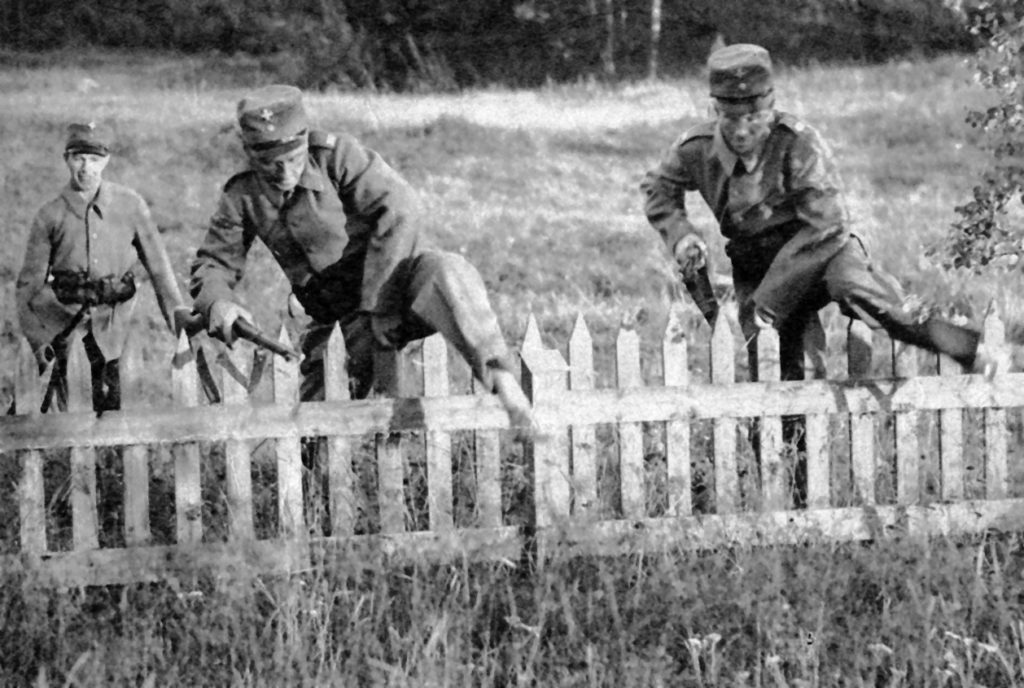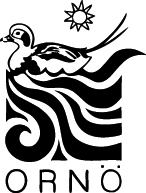· Start · Next sign · Previous sign · Swedish
FORTIFICATION – ORNÖ IN WAR AND IN PEACE
Here you can see the remains of a fortification. Stockholm archipelago and the waterways in to Stockholm have been of great strategic importance for the defence of Sweden throughout history.
When the Second World War broke out in 1939, it also affected life on Ornö. Many men from the island were called up for military service, and Ornö and neighbouring islands housed several fortifications with military staff. A home guard was also established, with Count Albert Stenbock as its first commander. This organisation remained on the island until the late 1900s.
In the 1930s, a decision was made to strengthen monitoring of the Swedish coastline and the sea border along the outer rim of the Stockholm archipelago. When war broke out, efforts intensified and Ornö was fortified with two batteries – one at Norrnäsudd and the other at Klubbudden, east of the church.
Each battery was equipped with two canons, with a range of six kilometres. During the war, two additional batteries were established, a mine station was set up at Långbäling between Ornö and Utö, and a command centre was established at Silverberg in the northeastern part of Ornö.
The Ornö coast was covered by fortifications like this one, and barracks for lodging and feeding were raised in about ten locations. During the summers, most soldiers lived in tents, but during the winters, the military made use of many of the summer cottages. The community centre (Ornö Bygdegård) was was also used as accommodation, and a sauna was also built here. The summer 1943 saw the most military activity. When all batteries and barriers were manned, there were several hundred people housed on the island. The inhabitants of Ornö were also faced with the war as refugees fled across the sea, mainly from the Baltics. Some of them were given temporary housing in the old school at Huvudskär.
Several islands and properties, among them Kochens udde, were considered to have a strategic position and were requisitioned by the military powers during the war.

Erik Strömberg from Ornö and two other veteran reserves on Nedergårdsö during the Second World War.
After the war, defences in this part of the archipelago were strengthened with installations on Stabbo and Bodskär, for example, while military presence on Ornö decreased.
During the Cold War, when there were tensions between the East and the West and until the mid-1990s, Ornö formed part of a military restricted area that encompassed a large part of Stockholm’s southern archipelago. In the 1960s, a watch tower was built, with a rotating tower radar on the southern island, that became a landmark for sailors and others. The radar house itself was dismantled around 2000, but the mast still remains. In recent years, incidents with suspected foreign submarines in our waters continues to serve as a reminder to us of Ornö’s strategic position.
Lervassa Trail was produced by Ornö Museum in collaboration with Stockholms läns Hembygdsförbund and with funding from the Swedish National Heritage Board.

